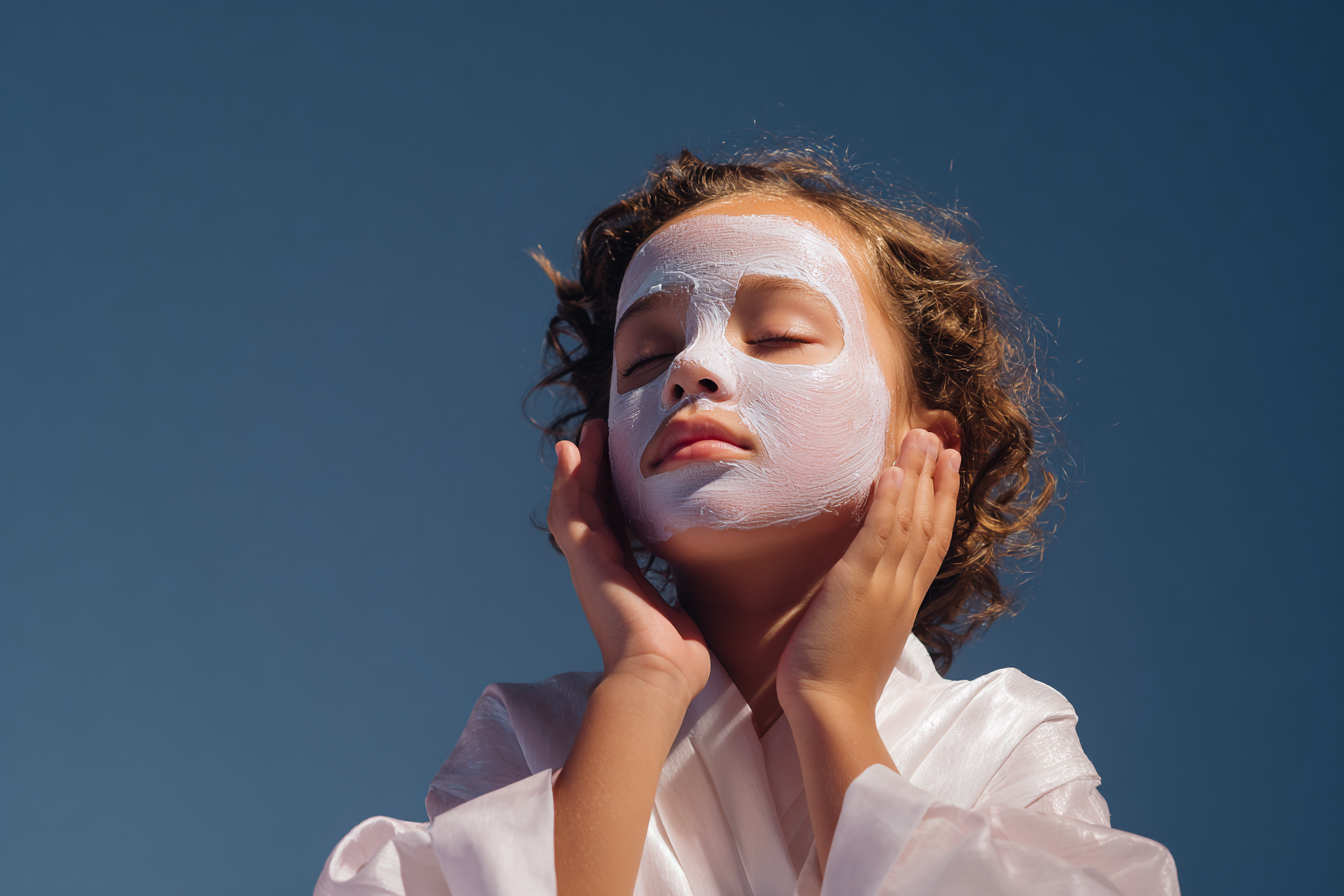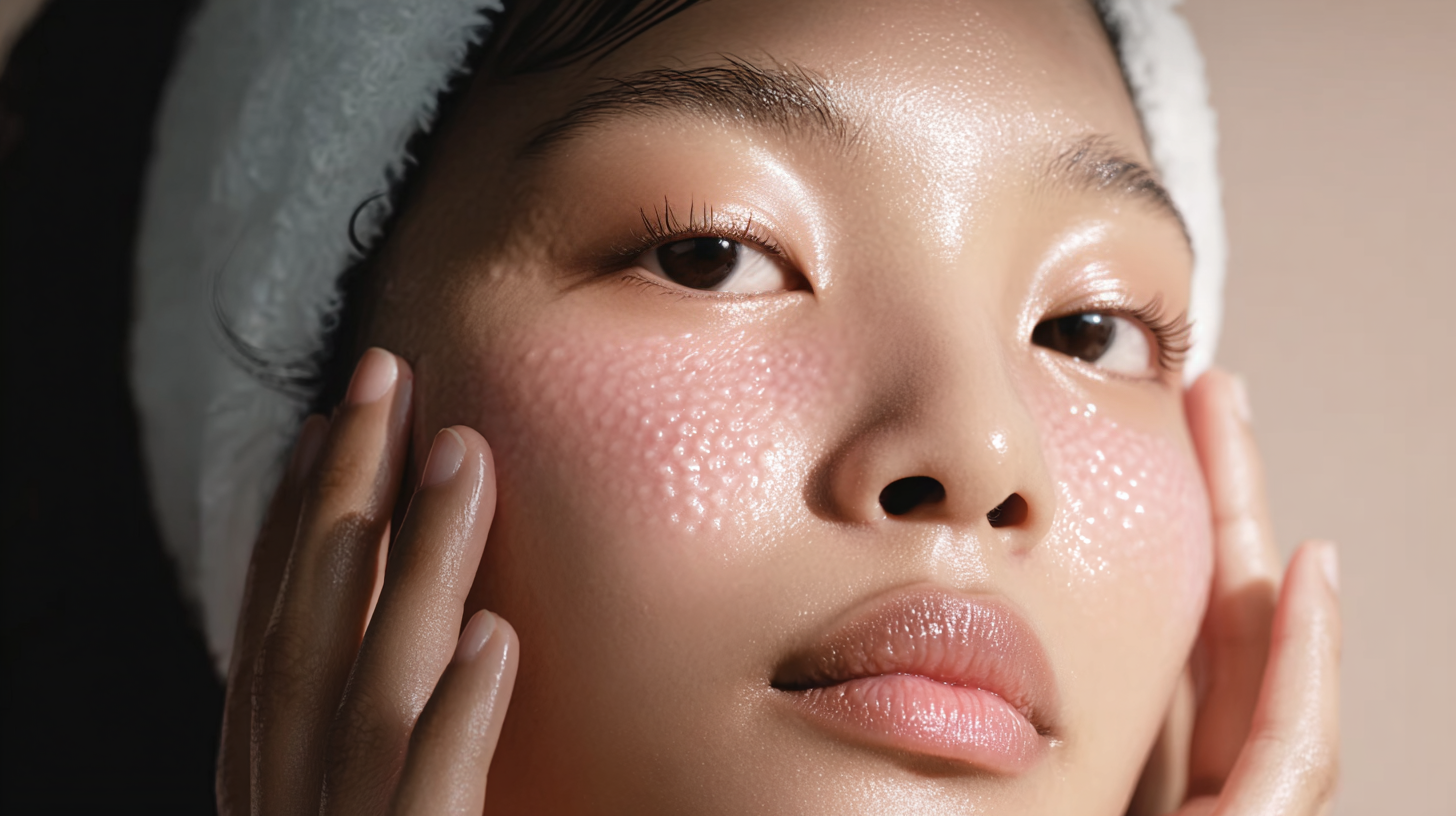What Skincare Do Children Actually Need?
Shay Mitchell’s launch of Rini, a kids’ skincare line for children as young as 3, has intensified a debate already rumbling through clinics, schools and social feeds: should children have skincare routines at all, and if so, what do they need. The short answer from dermatology literature and UK clinical guidance is simple. Healthy children need very little beyond gentle cleansing, moisturising when skin is dry, and rigorous sun protection. Everything else risks irritating an evolving skin barrier or normalising cosmetic overuse at an early age. The longer answer is that needs change with biology, not marketing cycles, and that biology is clear.
What children’s skin actually is
Paediatric skin is not a miniature version of adult skin. Through childhood the outer barrier remains thinner, with smaller corneocytes and different lipid organisation compared with adults, which affects water handling and reactivity. Multiple studies show that the stratum corneum in infants and young children is thinner and continues to mature across the first decade, with measurable differences in hydration and transepidermal water loss compared with adult skin. In practical terms, it is easier to irritate and does not need help from strong actives to do the job it already does well.
For young children, “their skin barrier is still developing and tends to be wonderfully self-sufficient” comments Dr. Jessica Halliley, Founder of Your Beauty Doctor. Frequent oil-based bathing regimens in early life can increase water loss through the skin, underscoring how easily a developing barrier can be nudged off balance. For young children, “Adding extra products often does more harm than good; children’s skin doesn’t need actives, exfoliants, or perfumed products. Think protect and preserve, rather than treat or perfect. Keep it simple — their skin will thank you for it later.”
Compared with adults, children’s skin hosts fewer lipophilic taxa and a more even, “generalist” community. Prior to puberty, facial and trunk sites show lower relative abundance of Cutibacterium acnes and Malassezia and more Streptococcus, coagulase-negative staphylococci and assorted Proteobacteria; as androgens rise at puberty, sebum increases and the microbiome shifts toward an adult, sebum-selected profile dominated by Cutibacterium and Corynebacterium, with site specialisation and reduced evenness, particularly on oily zones. It’s a delicate culture system, that experts advise to allow to settle. “You need to let the microbiome on their skin establish and using moisturisers and things can really upset skin barrier function. The skin knows how to function and when you see that peeling skin on babies it’s literally skin that’s shedding away, and will come away, it doesn’t need moisturising. My advice is just let it go, let the skin establish itself, let the microbiome establish itself and that will give better skin in the long run for life for your little ones” comments Kate Kerr, Founder of Kate Kerr London.
So what is it that children with healthy skin actually need? “A mild, fragrance-free wash, a simple moisturiser, and a daily SPF are the full routine. Kids don’t need actives or fancy products — they just need consistency and kindness to their skin barrier. Think of it as teaching them healthy skin habits early, rather than creating a “routine.” Less is truly more here” advises Zoe Budd, Founder of ZoBu. Population-level work in children also shows that age alone explains large fractions of variance in skin communities, with Streptococcus declining and Actinobacteria (including Propionibacterium/Cutibacterium) rising by early adolescence, bringing diversity and composition closer to adults. Starting too early can have adverse effects and increase lifetime risk of sensitivity or allergy - “especially if products are used regularly or not designed for young skin. Kids’ skin is thinner, more delicate, and their barrier is still developing, which makes it more reactive to fragrance, colourants, and preservatives,” adds Zoe. There are still some options for young children “Occasional play or dress-up makeup is fine — just use products designed for sensitive skin, remove them gently, and avoid daily use where possible. The goal isn’t to forbid cosmetics, but to be thoughtful,” comments Dr. Jessica.
The mental load of “starting young”
There is a parallel risk that is not dermatological. Normalising multi-step routines and anti-ageing language for primary school children reframes healthy skin as a problem to be managed and monetised. UK evidence links appearance pressures with poorer mental health in young people, and parliamentary work has highlighted widespread body image harms. Social media exposure correlates with increased appearance dissatisfaction, while beauty filter culture intensifies comparison. Against that backdrop, marketing skincare at children accelerates a pipeline where worry is the hook and routine is the spend.
Regulators have already intervened in adjacent areas. Cosmetic surgery advertising to under-18s is banned in the UK, an acknowledgement that promoting appearance interventions to young audiences carries risk. Skincare is not surgery, but the principle is relevant: intent and impact matter when commercial messages meet developing identities.
What age can a skincare routine be introduced?
There is no magic birthday. Needs shift when oil production rises with puberty. Pre-teens may notice shininess or small comedones; that is the moment to add a gentle daily cleanse and a light, non-comedogenic moisturiser. If breakouts appear, consider a mild salicylic acid face wash or targeted benzoyl peroxide, ideally introduced slowly and with guidance. Most individuals start their skincare routine as teenagers, but even then caution is advised.
Gaia Carminati, Head of Product Development at indu, captures why restraint is essential: “On the surface, teen skin is naturally smooth with virtually no lines. On the inside, it is rich in collagen and elastin and holds water far better than adult skin. That is why it looks so bouncy. So, while adults may need to supplement with potent anti-aging actives like retinoids, deep exfoliants, high dose vitamin C and collagen-boosting ingredients, teens don’t need any of this. Their skin already has it all in abundance. Teen skin needs balance: microbiome-friendly formulas that respect their skin barrier, a good cleanser to remove any makeup, dirt and pollution, lightweight moisturisers that help maintain hydration within the skin, a non-comedogenic SPF that won't clog their pores and, every now and then, a booster, to tackle the random spots or dry patches.” In other words, support what teenage skin already has rather than chasing adult-grade anti-ageing.
Kate Kerr’s practical threshold is the “oil switch.” When sebaceous activity clearly ramps up, usually around age 10 and upwards, start a routine that targets oil and congestion early to reduce the risk of entrenched acne. That can mean a salicylic cleanser and consistent, gentle care rather than a shelf of trend-led products.
Dr Halliley adds a useful rule of thumb for families: let the skin lead, “skincare should evolve naturally with the skin’s needs, not with marketing trends or peer pressure”. If there is oil or acne, respond with the lightest effective measure and build slowly. If not, stick to cleanse, moisturise and sunscreen.
A note on actives and “pro” products
Collagen-boosting actives, high-dose vitamin C, retinoids and intensive exfoliants are designed for adult concerns. Teenagers already have abundant collagen and elastin, and their barrier tolerates less. Introducing heavy actives early increases the chance of irritation, dermatitis and product hopping, which can spin into long-term sensitivity and distress. These risks are consistent with what we know about thinner, more reactive young skin and with clinical guidance that reserves stronger prescriptions for diagnosed acne, not curiosity.
If brands want to serve children responsibly, they should focus on three things: gentle cleansers, simple moisturisers for dry skin, and daily SPF in textures children will actually use. They should avoid anti-ageing claims, fragrance for the sake of sensorial theatre, and multi-step rituals that pathologise normal skin. Above all, they should de-escalate anxiety and help parents set boundaries that keep skin and self-image intact.
For healthy children, the right routine is short and boring. Cleanse gently, moisturise only when needed, protect from the sun. As puberty arrives, add the lightest effective tools, and only if the skin asks for them. Keep the conversation focused on function, not flaws. In doing so, we protect two barriers at once: the skin barrier on the surface and the psychological one that keeps commercial pressure at a healthy distance.










